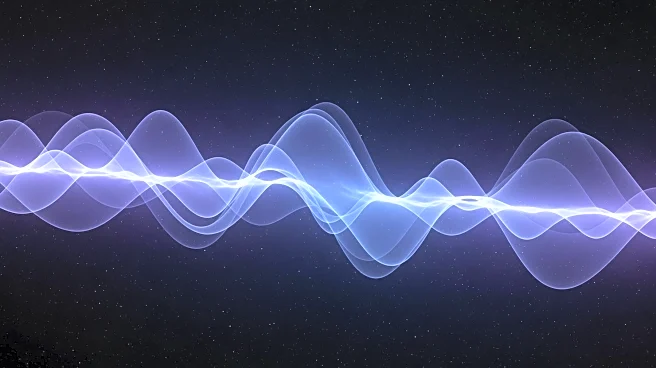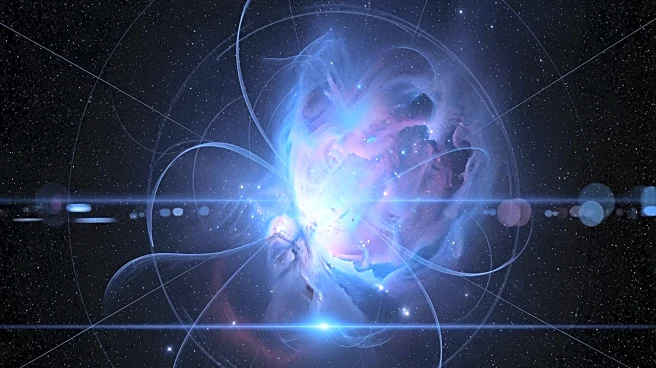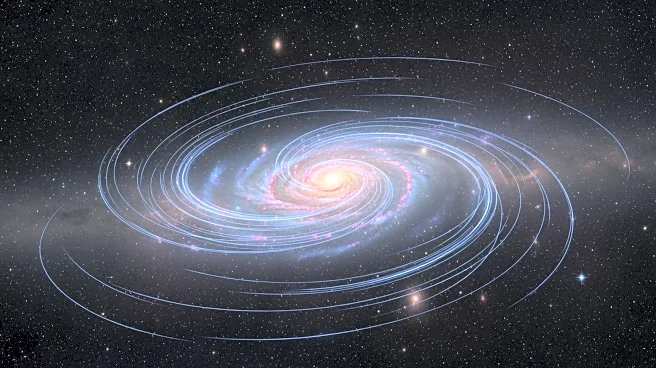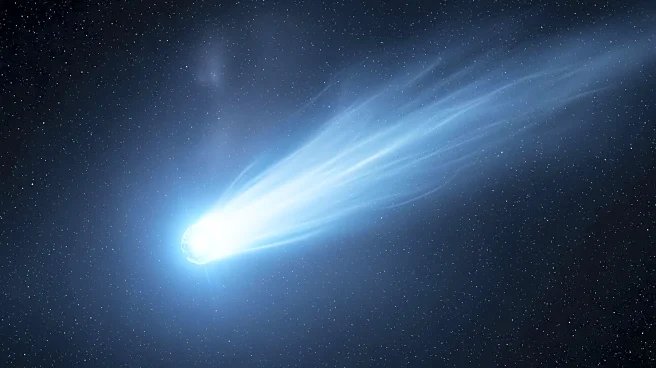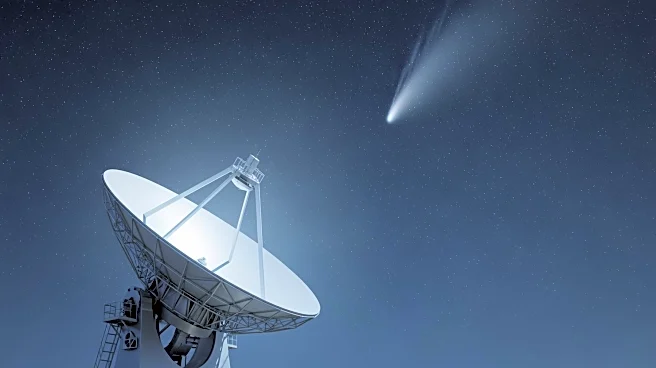What's Happening?
Astronomers have used multiscale simulations to explain the physics behind 'radio relics'—vast ribbons of diffuse radio emissions formed by galaxy cluster collisions. These relics are created by shock
waves that accelerate electrons to near-light speed, resulting in magnetic fields stronger than previously predicted. The study, led by researchers at the Leibniz Institute for Astrophysics Potsdam, successfully reproduced the behaviors observed in real relics, offering insights into their formation and evolution.
Why It's Important?
Understanding radio relics is crucial for astrophysics, as they provide insights into the dynamics of galaxy clusters and the universe's large-scale structure. The findings could enhance our knowledge of cosmic magnetic fields and electron acceleration processes, contributing to broader scientific understanding of the universe. This research may also inform future astronomical studies and observations, potentially leading to new discoveries about the universe's formation and evolution.
What's Next?
Researchers plan to build on this study to address remaining mysteries surrounding radio relics. Further simulations and observations could refine our understanding of cosmic shock waves and their role in shaping the universe. The study's success may inspire additional research into other cosmic phenomena, advancing the field of astrophysics and potentially leading to new technological developments in space observation.
